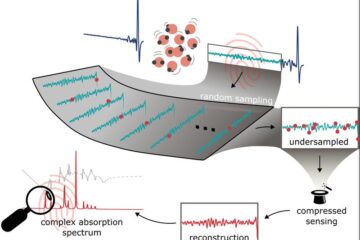Perspectives on computational biology methods

In its latest Perspectives in General Physiology series, the Journal of General Physiology (JGP) offers an in-depth look at several of these methods and the advantages of each as applied to membrane proteins, with special focus on ion channels. The Perspectives appear in the June issue (www.jgp.org).
The main focus of computational biology is to develop mathematical modeling and computational techniques to better analyze biological systems. As guest editor Benoit Roux (University of Chicago) explains, no single method can provide researchers with all the levels of description needed to fully examine every relevant lengthscale and timescale of a particular physiological process. However, the four Perspectives presented in this issue illustrate how various methods can be used to achieve different goals.
The Perspectives include: Denis Bucher and Ursula Rothlisberger (Ecole Polytechnique Fédérale de Lausanne) present ab initio (first-principles) simulations; David Shaw and colleagues (Columbia University) examine the all-atom molecular dynamics (MD) method; Ivet Bahar (University of Pittsburgh) shows how important insights can be obtained from “course-grained” (CG) models; and Jonathan Silva and Yoram Rudy (University of Chicago) examine a strategy using a small number of simplified “states” to represent a complex system.
The purpose of the Perspectives in General Physiology series is to provide an ongoing forum where scientific questions or controversies can be discussed by experts in an open manner.
About The Journal of General Physiology
Founded in 1918, The Journal of General Physiology (JGP) is published by The Rockefeller University Press. All editorial decisions on manuscripts submitted are made by active scientists. JGP content is posted to PubMed Central, where it is available to the public for free six months after publication. Authors retain copyright of their published works and third parties may reuse the content for non-commercial purposes under a creative commons license. For more information, please visit www.jgp.org.
Bahar, I. 2010. J. Gen. Physiol. doi:10.1085/jgp.200910368.
Bucher, D., and U. Rothlisberger. 2010. J. Gen. Physiol. doi:10.1085/jgp.201010404.
Dror, R.O., et al. 2010. J. Gen. Physiol. doi:10.1085/jgp.200910373.
Roux, B. 2010. J. Gen. Physiol. doi:10.1085/jgp.201010456.
Silva, J.R., and Y. Rudy. 2010. J. Gen. Physiol. doi:10.1085/jgp.200910358
Media Contact
All latest news from the category: Life Sciences and Chemistry
Articles and reports from the Life Sciences and chemistry area deal with applied and basic research into modern biology, chemistry and human medicine.
Valuable information can be found on a range of life sciences fields including bacteriology, biochemistry, bionics, bioinformatics, biophysics, biotechnology, genetics, geobotany, human biology, marine biology, microbiology, molecular biology, cellular biology, zoology, bioinorganic chemistry, microchemistry and environmental chemistry.
Newest articles

How evolution has optimised the magnetic sensor in birds
The magnetic sense of migratory birds is probably based on the protein cryptochrome 4, and a genetic study has now provided further support for this theory. A team of researchers…

Molecular Fingerprint Beyond the Nyquist Frequency
Ultrafast laser spectroscopy allows the ascertainment of dynamics over extremely short time scales, making it a very useful tool in many scientific and industrial applications. A major disadvantage is the…

High-energy-density aqueous battery based on halogen multi-electron transfer
Traditional non-aqueous lithium-ion batteries have a high energy density, but their safety is compromised due to the flammable organic electrolytes they utilize. Aqueous batteries use water as the solvent for…





















